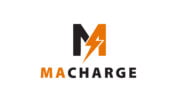
The transportation industry is undergoing a significant transformation. Electric vehicles (EVs) are really at the forefront of this change. It’s on everyone’s radar and popular diner conversation material. With governments worldwide pledging to reach carbon neutrality in the coming decades, the demand for EVs has soared. And so has the need for efficient and reliable EV charging infrastructure. This is where MaCharge, an EV installation and energy solution company with specialized electrical services, comes into play. EV charging stations are not the only solution to the challenges posed by the increasing number of EVs on the road. The concept of Vehicle-to-Grid (V2G) technology is gaining popularity as a potential game-changer in the EV charging ecosystem.
In this blog post, we will explore what V2G technology is, how it works, and the impact it could have on the future of mobility. MaCharge is preparing for a vehicle-to-load project. We wanted to take this opportunity to discuss the concept of vehicle-to-grid, highlight the technology and provide some useful information to future customers.
What is Vehicle-to-Grid (V2G) Technology?
As the name suggests, Vehicle-to-Grid (V2G) technology allows EVs to transfer power back to the grid when parked and plugged into a V2G-enabled charging station. This means that instead of solely consuming electricity from the grid, EVs equipped with V2G technology can also become sources of power.
A V2G-enabled EV charging station can provide power to the EV battery and also send excess power back to the grid. This two-way flow of electricity provides a more flexible and efficient energy system. By leveraging V2G technology, EVs can play a crucial role in balancing the grid’s supply and demand, particularly during peak hours or loss of power from the utility provider. Loss of power is becoming a more frequent event as we can all attest to.
How Does V2G Technology Work?
V2G technology is made possible through the use of specialized inverters that convert the direct current (DC) electricity stored in an EV’s battery into alternating current (AC) electricity that can be fed back into the grid. When the EV is parked and plugged into a V2G-enabled charging station, the inverters enable the two-way flow of electricity between the EV battery and the grid.
The inverters are also responsible for controlling the power flow, ensuring that the EV battery is not depleted below a certain level. This is important because the EV owner needs to have enough charge to drive the vehicle after it’s been parked.
Benefits of V2G Technology
Grid Stability and Resilience
By enabling EVs to feed power back into the grid during peak demand, V2G technology can improve grid stability and resilience. It can help reduce the need for expensive and polluting “peaker” power plants, which are typically used to meet peak demand.
Cost Savings
V2G technology can also result in cost savings for both EV owners and utility companies. EV owners can earn money by selling excess power back to the grid, while utility companies can avoid the need for costly infrastructure upgrades to meet peak demand.
Reduced Carbon Emissions
V2G technology can help reduce carbon emissions by allowing EVs to store excess renewable energy from the grid during times of low demand and then feed it back during peak demand. This can help reduce the need for fossil fuel-based power plants, which are typically used to meet peak demand.
The Future of V2G Technology
V2G technology is still in its early stages, but it has the potential to revolutionize the future of mobility. According to a report by Deloitte, V2G technology could provide up to $5 billion in net benefits annually to the US electric grid by 2050.
Leading Manufacturers of Vehicle-to-Grid Technology
ABB, a leading power and automation technology company, has already developed V2G technology that is being used in several countries. Other companies, such as Virta and EV Connect, are also developing and implementing V2G technology. The goal is to help with grid stability and reduce carbon emissions. Virta, a global provider of EV charging solutions, has also introduced V2G charging stations. The concept allows EVs to both charge and discharge electricity from the grid. The company has been working with several utilities and partners to integrate V2G technology and offer smart charging solutions.
EV Connect, a provider of open standards-based, cloud-connected electric vehicle (EV) charging solutions, is also focusing on developing V2G solutions. The company recently announced a partnership with the Los Angeles Department of Transportation (LADOT) to pilot V2G technology in the city. The pilot program aims to demonstrate the benefits of V2G technology for both EV owners and the grid. It can pave the way for the widespread adoption of V2G technology.
Benefits of Vehicle-to-Grid Technology Technology
V2G technology offers several benefits for both EV owners and the grid. For EV owners, V2G technology can provide additional revenue streams and cost savings. By participating in V2G programs, EV owners can earn money by selling excess energy back to the grid. Most notably, during peak demand periods. They can also benefit from lower energy costs by charging their EVs during off-peak hours, when electricity is cheaper.
For the grid, V2G technology can help improve stability and reliability. It can provide a source of energy storage and load balancing. With V2G technology, the grid can use EV batteries to store excess energy during times of low demand. It can then release that energy back into the grid during peak demand periods. This can help reduce the need for additional energy storage facilities and help balance the load on the grid.
Electric vehicles will make up 81% of all new light-duty vehicle sales by 2030. EVs are expected to account for 32% of the total vehicles on the road by 2040. This means that there will be an increasing demand for EV charging infrastructure. This will further drive the growth of V2G technology. According to a report by Deloitte, “V2G technology can help to integrate renewable energy sources, reduce greenhouse gas emissions, and improve the resiliency and reliability of the grid.” The report also suggests that V2G technology could become a significant source of revenue for utilities. Providing them with new business models and revenue streams.
Vehicle-to-Load (V2L) Technology
Another related technology that is gaining traction is Vehicle-to-Load (V2L). V2G technology focuses on the interaction between EVs and the grid. V2L technology focuses on the interaction between EVs and other devices. With V2L technology, EVs can be used as mobile power banks to power in home and businesses.
V2L technology can be particularly useful during power outages or in remote areas where there is no access to electricity. EVs equipped with V2L technology can provide backup power to homes and businesses .
EV Charging and V2G Technology – The Future
As V2G technology develops , it will be important to ensure that the infrastructure is in place to support it. This will require collaboration between automakers, utilities, governments, and other stakeholders. The need to develop standards and regulations for V2G technology and to ensure that the necessary charging infrastructure is necessary.
However, there are also some challenges associated with V2G technology that must be addressed. For example, the complexity of the technology and the lack of standardization can make it difficult to implement and scale up. In addition, concerns have been raised about the impact of V2G technology on battery life. The need for proper battery management to ensure the longevity of the battery is another concern. Despite these challenges, V2G technology should play a key role in the transition to a cleaner, more sustainable energy future. As more companies invest in V2G technology, we can expect to see continued innovation and development in this space.
V2G technology is a promising development in the world of electric vehicles and renewable energy. As more EVs hit the roads,, we can expect to see continued growth and innovation in this space. At MaCharge, we are committed to staying at the forefront of the latest trends and technologies. In fact, one of our first slogans on our website was “MaCharge, The Future of Transportation”. MaCharge is a leading EV installation company with a team of expert electricians,. We are well-positioned to help our customers take advantage of the many benefits of V2G technology. Whether you are looking to install an EV charging station at your home or business, or you are interested in exploring the potential of V2G technology, our team is here to help.
